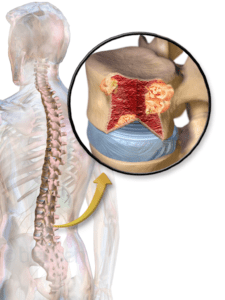Classical CD4 and CD8 T cell immunity have been the primary focus of understanding T cell immunity during cancer immunotherapy. Unlike classical T cells, unconventional cells are restricted to monomorphic antigen-presenting molecules, making them ideal therapeutic targets. As a result there has been growing interest in the role of unconventional T cells, such as CD1-d-restricted T cells, γδ T cells and Mucosal associated invariant T cells (MAITs), during cancer immunotherapy.
Multiple myeloma is hematological cancer characterized by clonal outgrowth of malignant plasma cells in the bone marrow. Despite advances in therapeutics which has resulted in increased survival and quality of life of patients suffering from Multiple myeloma (MM), a cure does not exist. Current therapies include the use of immunomodulatory drugs, such as Lemalidomide, highlighting the need for improved understanding of immune functions in patients with MM. Research led by Dale Godfrey aimed to determine immune profiles and functions of MAITs during MM.
MAITs recognize vitamin B metabolites, primarily riboflavin, via the MHC-related protein-1 (MR1) molecule. MAIT functional activity has also been demonstrated to occur independent of MR1-TCR interaction, primarily mediated by IL-12 and IL-18. Gherardin et al., used MR1 tetramers in combination with TRAV-1+ CD3+ T cells to define MAITs using flow cytometry in peripheral blood of untreated, newly diagnosed and relapsed MM patients. They observed significantly lower frequencies of MAITs in MM patients compared with healthy individuals. Functional analysis showed that untreated MM patients had significantly lower cytokine function (IFN-γ expression) than healthy individuals and relapsed MM patients. However, when cytotoxic functions were compared, untreated MM patients had similar capabilities to healthy controls. This difference in cytokine but not cytotoxic function in MM patients could be a result of non-treatment of the disease, or a result of using two different stimulation protocols.
Finally, to demonstrate that MAITs have the potential to kill myeloma cells, they showed upregulation of MR1 expression by myeloma cells lines, as well as efficient killing of myeloma cells by MAITs, in the presence of vitamin B synthetic metabolite, Acetyl-6-FP. Thus, demonstrating that during in-vitro cultures, MAITS are capable of killing myeloma cells in the presence of Acetyl-6-FP. However, these findings need to confirmed in vivo in the presence IL-12 and IL-18, as well as in vivo demonstration of MAIT killing.
Journal Article: Gherardin et al.,2018. Enumeration, functional responses and cytotoxic capacity of MAIT cells in newly diagnosed and relapsed multiple myeloma. Scientific Reports
Article by Cheleka AM Mpande












